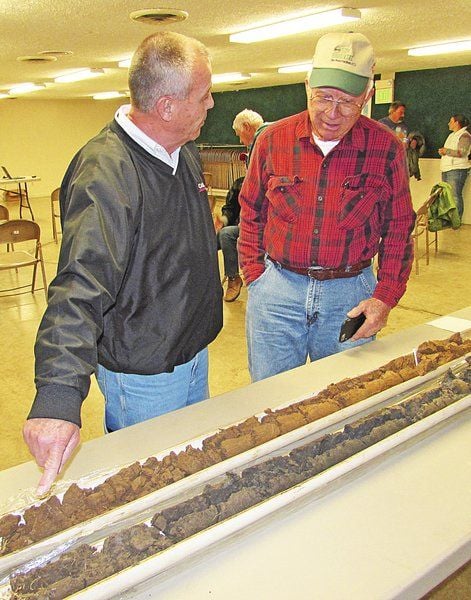Back in the late 1980s and early 1990s, before we had met Mike Plumer, he already had more than a decade of advocacy and research into no-till farming and cover crops, especially annual ryegrass. At the time, Mike was an Extension Educator with the University of Illinois, a post he held for 34 years..
We, in Oregon, where 90 percent of the world’s ryegrass seed is grown, had no idea that Mike Plumer was about to give the industry of agriculture an immeasurable gift, while giving the annual ryegrass seed growers a new reason to get up in the morning.
Plumer, working with an innovative Hamilton County, Illinois farmer named Ralph “Junior” Upton, helped quantify the benefits of annual ryegrass in “siltpan” (Bluford) soil. Upton was concerned about the productivity on parts of his 1800 acre farm, where the compacted soil restricted the root growth of corn and soybeans. He wondered if going no-till and adding cover crops might improve productivity.
Plumer began testing on Upton’s farm and quickly discovered what we in Oregon didn’t know – that annual ryegrass roots grow through and permeate compacted soil. Better than that, the roots then extend downwards to a much as five feet, creating new pathways to moisture and nutrients for corn and bean crops to follow.
Since 2004, Upton has seen dramatic changes in his corn yields., according to a USDA profile on him. He says no-till saves him around $15 an acre. Using cover crops costs $8-$20 dollars an acre but it is well worth it. The amount of organic matter in Upton’s soils started at less than 1 percent (.81). That level is now up to 3 or 4 percent. “And that’s exactly what I needed for my soils on those fields,” Upton said.

Since then, Plumer has experimented all over the Midwest (as well as contributing to agriculture internationally) and become the best known cover crop advisor in the country. Below are a couple of very informative power point presentations developed by Plumer, which outline both the benefits and the precautions of annual ryegrass and other cover cropping system. Visit the annual ryegrass by clicking here.




 If you want to build soil without investing much in a cover crop, consider annual ryegrass. A quick-growing, non-spreading bunch grass, annual ryegrass is a reliable, versatile performer almost anywhere, assuming adequate moisture and fertility. It does a fine job of holding soil, taking up excess N and outcompeting weeds.
If you want to build soil without investing much in a cover crop, consider annual ryegrass. A quick-growing, non-spreading bunch grass, annual ryegrass is a reliable, versatile performer almost anywhere, assuming adequate moisture and fertility. It does a fine job of holding soil, taking up excess N and outcompeting weeds.

